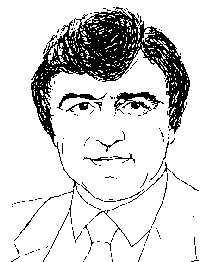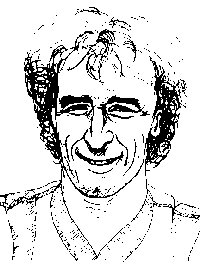
| Terry Venables |
Of the three promoted teams, it was the champions, Mansfield, who fared worst in the Second Division, ultimately being relegated after just one season. Palace and Brighton, always very closely matched, both looked at home straight away, and in the end it was the Seagulls, a team which Alan Mullery had built around Mark Lawrenson and the talented Peter Ward, who narrowly missed promotion to the First Division. It is of note that from 1974 to 1981, over a period of seven seasons, Palace and Brighton were always in the same division as each other, winning promotion at the same time as they progressed from the Third to the First. The rivalry that has built up between the two sets of supporters was fuelled when Venables and Mullery had a public slanging match after a particularly bad tempered game, the Brighton manager calling Palace a team of "animals", and Mullery has been despised ever since at Selhurst Park, not least for his vulgar gestures to the Palace fans.
It was Palace who started the season best, winning their first two games against Millwall and Mansfield, and moving into third place with seven games played. Venables gave further indication of his faith in the players who had won the F.A.Youth Cup by introducing two more of them into the team alongside Sansom, namely Peter Nicholas and Vince Hilaire.

| Peter Nicholas |
Nicholas was at this stage perceived as a defender and only played a couple of early games as cover for injured players, but Hilaire was given a good run as an inside forward rather than the more orthodox winger he was to become. A surprise inclusion for the team against Mansfield was Martin Hinshelwood, who had supposedly retired the year before, but who had been kept on the staff to help with coaching. With George Graham and Phil Holder both injured, Venables was forced to press Hinshelwood into the midfield and he played well, even scoring a goal, before being substituted late in the game.
Having beaten Brentford over two legs in the first round of the League Cup, Palace were given a chance for revenge over the F.A.Cup winners Southampton in the second round, but threw it away by missing a penalty in a goalless draw during which the referee sent off Phil Boyer for head-butting Jim Cannon, and Cannon for retaliating. In the replay at The Dell, which went to extra time, Southampton were leading 2-1 when Palace were awarded a penalty on the stroke of full time. Jeff Bourne's spot kick was saved but George Graham followed up to put the ball in the net for the equaliser. As the players left the field, most of them shared the belief of the crowd that 2-2 was the final score, but it transpired that the referee had disallowed the goal, ruling that full time was up the moment the goalkeeper had saved the original shot. Never one to take defeat graciously, Terry Venables had a good old moan about being cheated by the referee, although he had in fact made the correct decision.
Putting this setback behind them, Palace went on to beat Sheffield United and leaders Bolton in the league, despite George Graham being sent off again, to stay in touch at the top. The programme for the next game, against Fulham, included an item about Ian Evans, who had by now played 13 times for Wales and was looking forward to the imminent World Cup qualifier against Scotland, for which he was an automatic choice. The Fulham game changed the whole direction of Palace's season, and brought Evans' career for both Palace and Wales to a cruel end. The once great George Best was now playing for Fulham, and when he and Evans went for a loose ball around the halfway line they arrived at exactly the same time; the cracking of bone produced an unmistakable sound that could be heard by all 28,343 people in the crowd. Best was unscathed, but Ian Evans had sustained a double fracture to his right leg which put him in hospital for months.

| George Graham |
The loss of Evans affected Palace's form very badly, and their position deteriorated steadily to that of a mid-table side, which on reflection turned out to be a blessing for Venables, giving him a very convenient opportunity to experiment with his young players. He was constantly being asked why he didn't buy anyone to strengthen the team and push for promotion, and he was always clear with his reply; Bloye wouldn't give him any money. He believed, however, that the youth team, now heading towards a second successive F.A.Youth Cup victory, would form the basis of his side for next season, and with the breathing space created by having earned points early on, he devoted the rest of the year to his experiments. The first task, though, was to replace Evans at centre back, because the optimistic forecasts of an early recovery were soon found to be far from true. Peter Wall played there for a few games, and then Mel Blyth came back from Southampton on a three month loan, forming a nostalgic link with the days of Bert Head, which now seemed light years away. Next into the number six shirt was Peter Nicholas, soon to be succeeded by Billy Gilbert, who formed a partnership with Jim Cannon that was to last for the next six years.
Venables knew that the current team would not last too long in the First Division if they were elevated too soon, so he was ruthless in his purge of anyone who wasn't either young enough or good enough to have a part to play for the next few years, and started to trim his squad in preparation for next season. The first to go was Jeff Bourne, who signed for Dallas Tornado, followed by Peter Wall and Stewart Jump. Steve Perrin was then sold to Plymouth for £35,000, and Neil Smillie and Tony Burns went to America on loan for the rest of the season. To replace Burns, Venables invested £40,000 in Aston Villa's John Burridge, the classic goalkeeping clown and Bruce Grobbelaar's role model, who instantly became popular with the fans after years of enduring the grim countenances of Burns and Hammond.

| Billy Gilbert |
Palace's final position of ninth in Division Two was a good one considering the experimental nature of the team and their extreme youth, especially when one realises that five of the players - Nicholas, Gilbert, Hilaire, Murphy and Fenwick - were combining their first team duties with playing in the Youth Cup. Venables had done well to completely transform the team bequeathed to him by Malcolm Allison, without having been able to spend much money, and after two years only Chatterton, Cannon, Swindlehurst and Sansom remained. The celebrity status of Terry Venables was being enhanced with a T.V. serialisation of his 'Hazell' books, co-written with Gordon Williams, and at the same time as he was coining it in from that, the board of directors were busy concocting a deal with Sainsburys, which the present chairman Ron Noades has implied lined their own pockets at the club's severe long term expense. Several of the young players were already representing their countries at youth level, and were showing great promise for the future, and everything seemed on the up and up. The great surprise, given this anticipation of imminent success, was that it actually happened.
